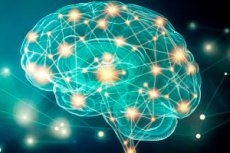New publications
Targets in the brain for heartbeat regulation and depression treatment identified
Last reviewed: 02.07.2025

All iLive content is medically reviewed or fact checked to ensure as much factual accuracy as possible.
We have strict sourcing guidelines and only link to reputable media sites, academic research institutions and, whenever possible, medically peer reviewed studies. Note that the numbers in parentheses ([1], [2], etc.) are clickable links to these studies.
If you feel that any of our content is inaccurate, out-of-date, or otherwise questionable, please select it and press Ctrl + Enter.

A new study by researchers at Brigham and Women's Hospital suggests there may be a common network in the brain linked to slow heart rates and depression. After analyzing data from 14 people without symptoms of depression, the team found that stimulating parts of the brain linked to depression using transcranial magnetic stimulation (TMS) also affected heart rate. This suggests that doctors may be able to target these areas without the use of brain scans, which aren't always available. The study's findings are published in the journal Nature Mental Health.
"Our goal was to find a way to use TMS therapy more effectively, to properly dose it, slowing the heart rate, and identifying the best location on the brain to stimulate," said senior study author Dr. Shan Siddiqui, of the Brigham and Women's Health Department and the Center for Therapeutic Brain Circuit Research. Siddiqui said the idea came from a conference in Croatia where researchers from the Netherlands were presenting data on the heart-brain connection.
"They showed that not only can TMS temporarily lower heart rate, but that the location of stimulation matters," Siddiqui added, noting that the most exciting part of the study for him is the potential to make this highly targeted depression therapy available to the rest of the world. "We have a lot of technology available here in Boston that can help people manage their symptoms," he said. "But some of that technology has been difficult to bring to the rest of the world before."
Siddiqui worked with his colleagues at the Brigham’s Center for Therapeutic Brain Circuit Research and lead author Eva Dijkstra, MSc, to complete the study. Dijkstra, a PhD candidate, came to the Brigham from the Netherlands to combine their work on heart-brain connectivity with the CBCT team’s work on brain circuits.
The researchers looked at functional MRI scans of 14 people and identified areas in their brains that were considered optimal targets for depression treatment based on previous research on connectivity and depression. Each participant was assigned 10 brain areas that were both optimal ("connected areas") and suboptimal for depression treatment. The researchers then looked at what happened to the heart rate when each area was stimulated.
"We wanted to see if there would be a heart-brain connection in the associated regions," Dijkstra said. "For 12 of the 14 usable datasets, we found that we could pinpoint the region associated with depression with high accuracy simply by measuring heart rate during brain stimulation."
Dijkstra noted that this discovery could help both individualize TMS therapy for depression by choosing a personalized location on the brain for stimulation, and make it more accessible because it would not require a preliminary MRI.
Siddiqi added that the results of this study could also be used to develop treatments that could be useful to cardiologists and emergency room physicians in the future.
One limitation of the study is that it was conducted on a small number of people, and the researchers did not stimulate all possible areas of the brain.
The team's next goal is to map out which areas of the brain to stimulate to make heart rate changes more consistent.
Dijkstra’s team in the Netherlands is now working on a larger study involving 150 people with depressive disorders, many of whom have treatment-resistant depression. The data from that study will be analyzed later this year, potentially bringing the research closer to clinical application.
